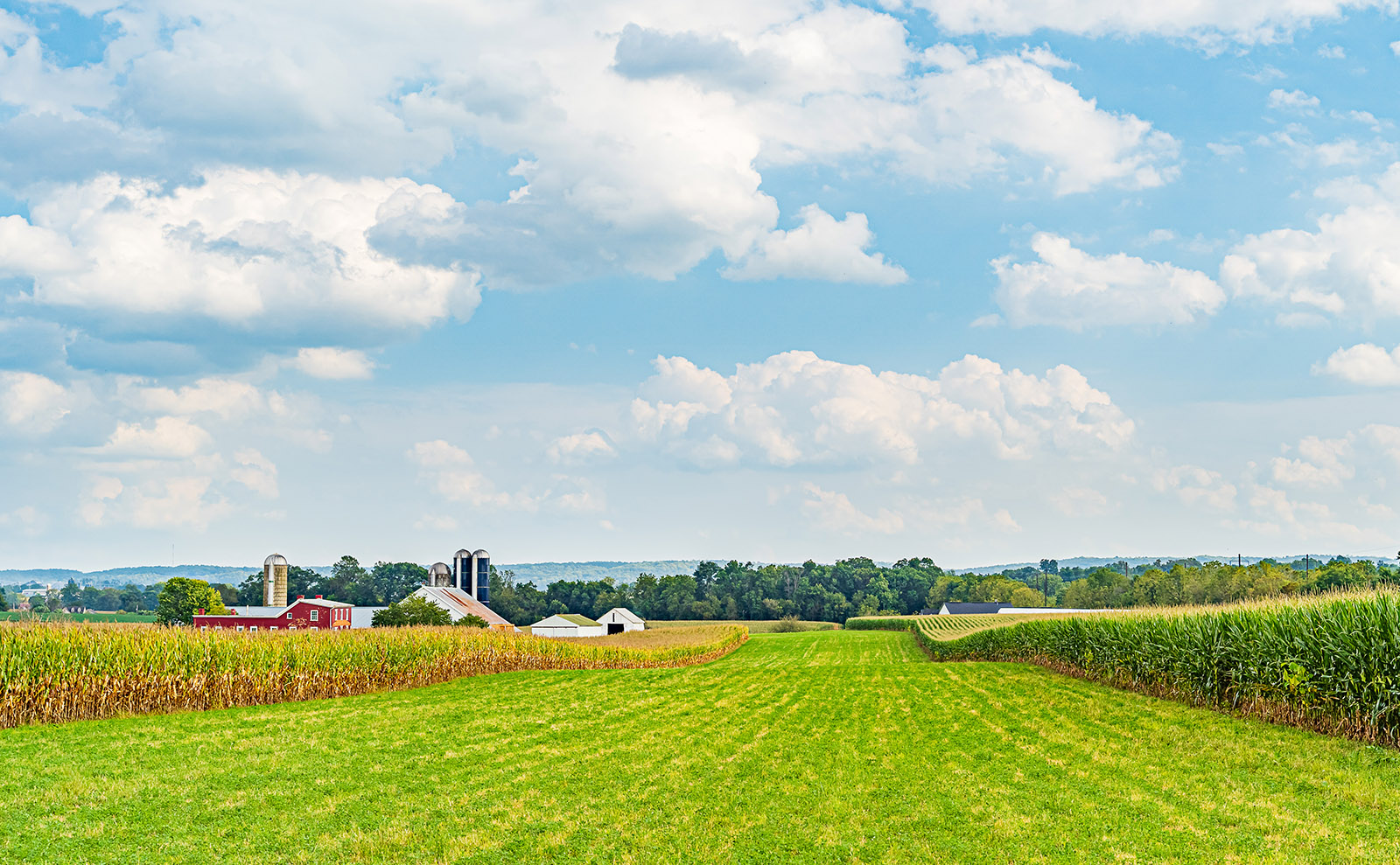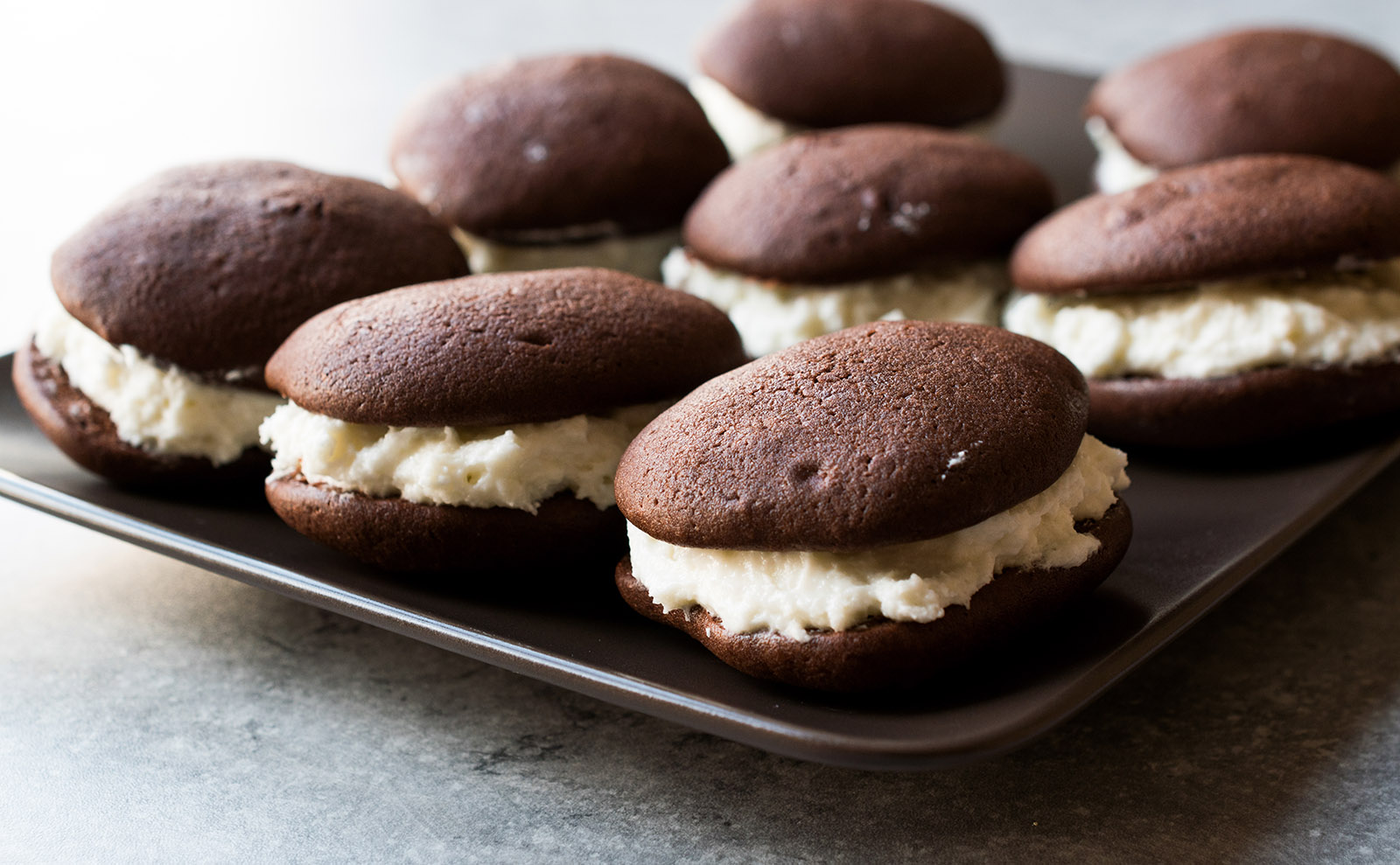
Armchair travel around the world!
Start your reading adventures with our FREE Reading Atlas.

- Around the World in 14 Books
- 7 Thrilling Book Series
- 6 Audiobooks That Are Like Theater For Your Ears



Food and drinks are some of the easiest ways — and the most fun— to vicariously experience another culture. When you add a great book to the mix, you've got the makings of a perfect evening. In Food+Fiction, we recommend a delicious read and a related recipe so you can try the taste of different destinations in your own kitchen.
This post is part of our Food+Fiction series.

Celebrate the simpler, pleasurable things in life with a rousing account of a 1950s childhood and a sweet treat that represents the vast farmland of Pennsylvania. Great stories and whoopie pies are cause for celebration.
In Pulitzer Prize-winner Annie Dillard’s memoir An American Childhood, we’re transported to the Pittsburgh of her childhood. In the 1950s, its downtown was a vibrant blend of big city and hometown charm. We explore Dillard’s external world and her internal landscape, joining in as she indulges in daydreams about the French and Indian War, a passion for drawing, and intense fascination with rocks, bugs, and the French symbolists.
Lyrical and engaging, her almost-essays are a celebration of an all-American childhood in a different America than we inhabit today. It’s nostalgic and celebratory — just the right amount of sweetness and light with enough edge to keep things interesting.
Which brings us to… whoopie pies.
They, too, are a sweet treat with a mildly contentious history. Although states including Maine, Massachusetts, Virginia, and New Hampshire all claim to be the birthplace of the whoopie pie, we’re awarding that distinction to Pennsylvania.
The Pennsylvania Dutch Convention & Visitors Bureau says that the whoopie pie originated with the Amish and Pennsylvania Dutch people of eastern Pennsylvania. In that community, recipes are passed down through generations, not via written records, but by teaching them in the kitchen. According to Amish legend, when kids found the cookies in their lunch bags, they shouted, ‘Whoopie!’ And that’s how the dessert got its name.
In western Pennsylvania, these sandwich cookies are known as ‘gobs,’ perhaps because lumps of coal were called ‘gob piles.’ The little cakes — with frosting on the inside instead of the outside — resembled small lumps of coal hence the name gobs. Back in the day, Gobs were commercially produced by the now-defunct Harris & Boyar Bakery in Morrellville. The company most likely adapted a Pennsylvania Dutch recipe, which itself was based on a recipe from medieval Germany.
So how did a German-Amish-Pennsylvania Dutch dessert makes its way to New England? Food historians believe it can be traced to Yummy Book, a 1930s cookbook published to promote the Durkee Mower Company, the manufacturer of Marshmallow Fluff. (The company still offers an online version.) Their recipe for ‘Amish Whoopie Pie’ used marshmallow in the filling in place of butter or shortening. As any true Pennsylvanian and whoopie pie aficionado will tell you, this is sacrilege.
This recipe is based on a typical Amish recipe with one exception: It replaces the standard vegetable shortening in the filling with butter. Butter makes everything better. Whoopie!

Makes 6. Total time: 1 hour.
Cakes:
NOTE: To make these gluten-free, replace the all-purpose flour with 2 cups gluten-free flour blend plus 2 teaspoons potato starch.
Filling:
Prep. Preheat oven to 350F/175C. Line a baking sheet with parchment paper.
Mix the cakes. In a mixing bowl, cream together the butter and brown sugar. Add the egg and vanilla extract and beat until light and creamy. In a separate bowl, whisk together the baking soda, salt, flour, and cocoa. Add 1/3 of the dry ingredients and 1/3 of the buttermilk to the butter mixture; blend well. Continue to alternate and mix until it’s all incorporated.
Scoop the cakes. Using a 1/4-cup measuring cup, scoop out the batter and place them about 6 inches apart on the baking sheet. Bake until the tops are puffed, and the cakes spring back when you gently poke them, 12 to 14 minutes. Remove from oven and cool completely before filling.
Cook the egg whites. Fill the bottom half of a double boiler (or a medium saucepan) with 1-2 inches of water. Bring to a boil over high heat, then reduce heat to a simmer. In the top half of the double boiler (or a metal/glass bowl), combine the egg whites and sugar. Place over the simmering water and whisk just until sugar is dissolved and the temperature reaches 180F/82C on an instant-read thermometer.
Make the buttercream. Transfer the egg whites to a mixing bowl. Using a whisk attachment, beat the egg whites and sugar on high until they double in volume. They should look thick and shiny. Continue to whisk until the mixture cools. Reduce the speed to medium and add the butter, about 2 teaspoons at a time, until all the butter is incorporated. Add the vanilla and salt. HEADS UP: If the mixture looks curdled, keep whisking until it’s smooth. Crank up the speed to high and whisk for another minute.
Assemble! With a spoon or ice cream scoop, drop 1/4 cup filling on the flat side of the cakes, spreading the buttercream to the edges. Top each with another cake to make a sweetly delicious sandwich. Shouting whoopie is recommended but optional.
To store: Place the whoopie pies in an airtight container and store at room temperature for up to 3 days. You can also individually wrap them and pop ‘em into the freezer for future dessert emergencies.
Now we sat in the dark dining room, hushed. The big snow outside, the big snow on the roof, silenced our words and the scrape of our forks and our chairs. The dog was gone, the world outside was dangerously cold, and the big snow held the houses down and the people in. Behind me, tall chilled windows gave out onto the narrow front yard and the street. A motion must have caught my mother’s eye; she rose and moved to the windows, and father and I followed. There we saw the young girl, the transfigured Jo Ann Sheehy, skating along under the streetlight. She was turning on ice skates inside the streetlight’s yellow cone of light — illuminated and silent. She tilted and spun… Distant over the street, the night sky was moonless and foreign, a frail, bottomless black, and the cold stars speckled it without moving. — Annie Dillard
The sentences crackle with energy in Pulitzer Prize winner Annie Dillard’s memoir of growing in 1950s Pittsburgh. Buckle up for a rollicking trip through her childhood with writing so good, it might make you nostalgic for your own hometown. Dillard’s powers of observation and recall — and, perhaps, imagination — are shocking. She nails what it’s like to be a child of five and 10 and 15. To feel the wonder and fear and beauty of waking up to the world. {more}
This vivid memoir (272 pages) was published in January of 1989 by Harper & Row Publishers. The book takes you to 1950s Pittsburgh, Pennsylvania. David read An American Childhood and loved it; it wouldn't be on our site if he didn't recommend it.
Bookshop.org is an online bookstore with a mission to financially support independent bookstores and give back to the book community.
Top image courtesy of Vadim 777/Shutterstock.
Want to keep up with our book-related adventures? Sign up for our newsletter!
Can you help us? If you like this article, share it your friends!
Strong Sense of Place is a website and podcast dedicated to literary travel and books we love. Reading good books increases empathy. Empathy is good for all of us and the amazing world we inhabit.
Strong Sense of Place is a listener-supported podcast. If you like the work we do, you can help make it happen by joining our Patreon! That'll unlock bonus content for you, too — including Mel's secret book reviews and Dave's behind-the-scenes notes for the latest Two Truths and a Lie.
Join our Substack to get our FREE newsletter with podcast updates and behind-the-scenes info — and join in fun chats about books and travel with other lovely readers.

We'll share enough detail to help you decide if a book is for you, but we'll never ruin plot twists or give away the ending.
Content on this site is ©2025 by Smudge Publishing, unless otherwise noted. Peace be with you, person who reads the small type.